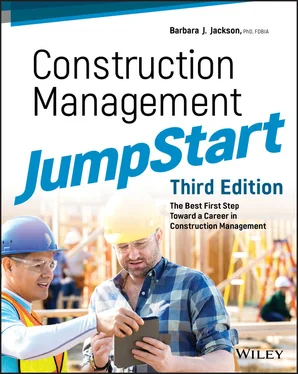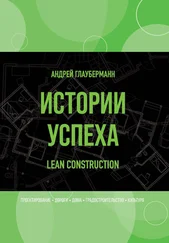This level of influence includes subcontractors, material suppliers, and equipment vendors. This layer directly influences the outcome of a job in a serious way. Although this group is often directly connected to the primary players via a subcontract agreement or a purchase order agreement, they are primarily independent operators and not under the immediate control of the owner, the architect, or the contractor. And because they are not under direct control and yet provide vital services, they always add risks to the project. For example, a subcontractor is scheduled to start their portion of the work on a certain date but instead shows up three weeks later, delaying the startup of other related work and, therefore, delaying the completion of the overall project. Or a material supplier promises to deliver the concrete block for a commercial building on a Monday, and your masonry subcontractor has a full crew waiting to start the work at 7 a.m. The delivery doesn't arrive, and the subcontractor goes off to start another job. The block delivery then shows up on Tuesday, but the subcontractor is unwilling to return to your job until he finishes the one that he has already started.
This level of influence includes insurance companies, utility companies, bonding companies, building code officials, zoning, labor unions, and manufacturers. Although this level has no contractual connection or obligation to any of the three primary parties, they hold great influence over your project. For instance, a building inspector can shut down operations on a job for even the slightest code infringement, causing work stoppage for trades not even involved in the infringement. Or an insurance agent who fails to issue certificates of insurance on subcontractors in a timely fashion can put a monkey wrench in the administrative requirements and ultimately put the project schedule at risk. Or a strike at a manufacturing plant thousands of miles away can delay the delivery of your air conditioning units for a new retail store, delaying the completion of the job, delaying the opening of the store, and, therefore, costing the owner thousands of dollars in lost revenue for each day of delay.
This layer of influence includes the courts and attorneys, local government, state and federal government, trade associations, education and training, bankers, and others. Like the second level mentioned previously, these parties do not have a direct link to the primary players but do influence construction projects on a regular basis. Although the effects are not always immediate, actions and decisions by this group of players can have a significant impact on the whole industry, which eventually trickles down to the project level. For instance, government agencies that adopt policies or create new laws relative to such things as growth, wetlands, or endangered species are constantly having an impact on the construction industry. With the stroke of a pen, a project can be stopped dead in its tracks, and millions of dollars can be at stake for the owner, the contractor, and even the architect, not to mention the eventual end users. Decisions to eliminate craft training and educational opportunities at vocational high schools and the decrease in labor union training have greatly affected the industry. The shortage of skilled workers immediately impacts the ability of the construction manager to deliver a quality product on time and within budget to the owner. It is the single most important issue facing the industry today.
In my estimation, construction is one of the most honorable professions that a person can pursue. However, the image of the construction industry is admittedly not always a positive one. As so often is the case, the negative aspects of this industry get the most coverage in the media and through word-of-mouth. The positive aspects—and there are many—are less often communicated, leaving us with the stereotypical images of construction. Practitioners who are all brawn and no brains, an unreliable workforce, a dangerous and dirty work environment, unscrupulous con artists posing as professional contractors, and entrenched discriminatory and sexist attitudes are some of the imagery conjured up regarding the construction industry. Don't get me wrong, the industry has its challenges; however, I find the industry to be filled with principled, hardworking, dedicated individuals, committed to building better communities. The industry may not have done the best job projecting its image in a positive light over the years, but that is changing. And as a teacher of the next generation of construction professionals, I can tell you that the future is looking very bright.
An Industry in Transition
Turning the image of the construction industry around is no easy task. Millions of dollars have been invested by several construction associations over the past several years in an effort to change the public's perception, and it appears to be paying off. The Associated General Contractors (AGC) has developed an exciting campaign called Construction Futures , an initiative designed to alter the current perception of the construction industry and to inform and educate youngsters, their parents, and teachers about the career opportunities that the construction industry has to offer.
The National Association of Home Builders (NAHB) created a public service campaign called Home Builders Care to recognize contractors who have contributed millions of dollars in cash, building materials, supplies, and countless volunteer hours to community charities through local community service projects.
Another effort, ABCares , is a national community service initiative undertaken by the Associated Builders and Contractors (ABC) to recognize chapters that contribute significantly to their communities.
Even the toy industry appears to be contributing to the rebuilding of the industry's image, although unintentionally, I'm sure. The Bob the Builder television franchise has sold millions of dolls, storybooks, and assorted toys in recent years.
It is hard to tell whether the efforts by the various construction associations have paid off, but it seems that the industry is clearly in transition, and there are clear signs that a new respect for construction is emerging. The days of the individual master builder are long gone, but the new master builder, the collaborative team, is taking on challenges the likes of which have never been seen before, and the world is watching. The rebuilding of the Pentagon after September 11, 2001, is a good example. A project that was slated to take five years by federal government estimates was completed by September 11, 2002, in only 364 days by men and women determined to show what the American construction industry can do.
In 2004 and 2006 the Construction Users Round Table (CURT) published two white papers. The 2004 paper was entitled “Collaboration, Integrated Information, and the Project Lifecycle in Building Design, Construction and Operation.” The 2006 paper was entitled “Optimizing the Construction Process: An Implementation Strategy.” (You can access both papers on the CURT website at www.curt.org. The papers are free for members and available for a small fee to nonmembers.) These white papers stress the need for more collaboration and teamwork among project players in the design and construction process and the implementation and use of advanced technology to address design and construction integration issues. The Construction Users Round Table represents owners—our clients, stakeholders, and end users in the construction business—and it is very important that we listen to what the organization is saying. These white papers articulate a clear message about the direction owners want the industry to take, and it appears that contractors and construction managers are responding.
Читать дальше












